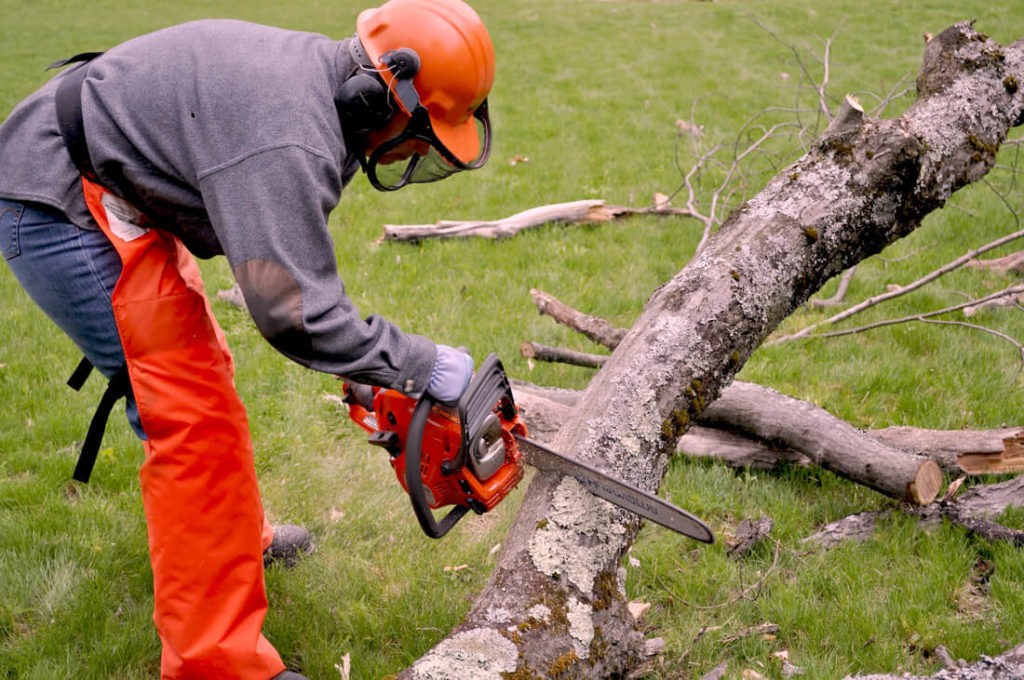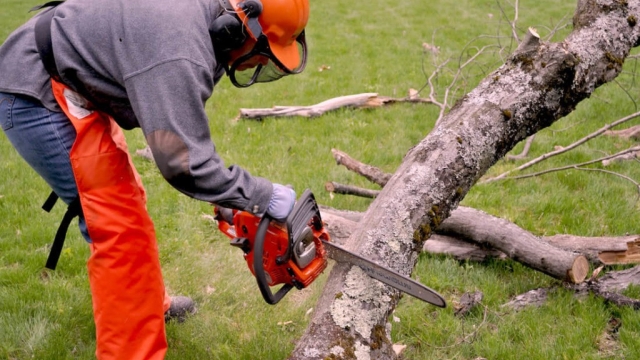Rooting Out the Trees: Unveiling the Art of Tree Removal
The process of tree removal can be a meticulous and challenging task. Whether it is to make way for new construction, prevent potential hazards, or simply to improve the aesthetics of a property, the art of tree removal requires careful planning and execution. Removing a tree is not just about chopping it down; it involves a systematic approach to ensure the safety of both the workers involved and the surrounding environment. By understanding the intricacies and techniques involved in tree removal, we can gain a deeper appreciation for the craftsmanship and skill required to effectively root out these towering giants from our landscapes. So, join us as we delve into the world of tree removing and uncover the secrets behind this delicate process known as tree removal.
Tools and Equipment for Tree Removal
When it comes to tree removal, having the right tools and equipment is essential. Without them, the task can become not only difficult but also risky. Here are some key tools that are commonly used for tree removal:

-
Chainsaw: A chainsaw is perhaps the most crucial tool for cutting down trees. With a sharp and powerful chain, it can efficiently cut through branches and trunks. Chainsaws come in different sizes, and the choice depends on the tree’s diameter and the arborist’s level of expertise.
-
Pruning Shears: Pruning shears, also known as loppers, are used to remove smaller branches or limbs. These handheld tools have long handles for reaching heights and sharp blades that can cleanly cut through branches. Pruning shears are ideal for precision trimming and shaping trees.
-
Climbing Gear: Tree removal often requires climbing to access higher branches. Arborists use climbing gear like harnesses, ropes, and ascenders to safely ascend and descend trees. These tools provide stability and ensure the arborist can move around the tree without the risk of falling.
-
Stump Grinder: After a tree is cut down, the remaining stump can become an eyesore or an obstacle. A stump grinder is a powerful machine used to grind the stump into small wood chips. It eliminates the need for manual digging or using chemicals to remove the stump, making the whole process more efficient.
-
Safety Equipment: Tree removal is a hazardous undertaking, so wearing the appropriate safety equipment is vital. This includes a hard hat to protect the head from falling debris, ear protection to reduce noise exposure, and safety goggles to shield the eyes from wood chips or dust.
Having the right tools and equipment not only ensures the successful removal of trees but also promotes safety for both the arborist and the surrounding environment. It is crucial to use these tools correctly and to have the necessary experience before attempting any tree removal.
Techniques for Safe and Efficient Tree Removal
When it comes to tree removal, employing safe and efficient techniques is of utmost importance. By utilizing proper methods, tree removal professionals ensure the safety of both surrounding structures and individuals. Let’s explore some key techniques that are commonly used.
-
Climbing and Rigging: One commonly employed technique for tree removal involves climbing the tree using specialized gear and equipment. A skilled arborist carefully ascends the tree, using ropes and harnesses to ensure their safety. Once in position, the arborist can strategically cut down the tree in sections, lowering each piece safely to the ground using rigging techniques. This method allows for careful control over the tree’s descent, minimizing the risk of damage to nearby objects.
-
Crane-Assisted Removal: In situations where a tree is particularly large or poses a threat to nearby structures, a crane-assisted removal technique may be used. This involves utilizing a crane to safely lift and remove sections of the tree. The crane operator works in tandem with arborists on the ground who carefully guide the tree’s removal. This technique is especially useful when dealing with trees that are in tight or confined spaces, where traditional climbing methods may not be feasible.
-
Stump Grinding: After a tree has been removed, the remaining stump can be an eyesore and potentially a tripping hazard. Stump grinding is a technique commonly used to remove the lower portion of the tree that remains in the ground. A powerful grinder is used to chip away at the stump, breaking it down into smaller wood chips. This method not only facilitates the complete removal of the tree but also allows for the possibility of replanting or repurposing the area.
By employing these various techniques, professionals can safely and efficiently remove trees while minimizing potential risks and damage. Tree removal is a specialized skill that requires expertise and knowledge, ensuring the process is carried out smoothly and with the least disruption to the surrounding environment.
Disposal and Aftercare of Removed Trees
In the process of tree removal, it is crucial to properly dispose of the trees and take care of the area afterwards to ensure safety and environmental responsibility.
After a tree has been removed, it is important to handle the disposal in an appropriate manner. One common method is to cut the tree into smaller sections for easy transportation and disposal. These sections can then either be utilized for firewood or sent to a recycling facility. Recycling the wood not only reduces waste but also allows for its use in various other applications, such as creating mulch or even furniture.
In addition to disposing of the removed tree, it is equally important to consider the aftercare of the area. This involves addressing any potential hazards or damage caused by the removal process. For instance, if the removal involved digging and uprooting, it is necessary to fill the resulting hole properly. This ensures that the ground is level and safe for future use.
Furthermore, aftercare may also involve replanting or landscaping the area where the tree once stood. This not only helps to restore the aesthetic appeal but also serves as a positive step towards maintaining the ecological balance. By choosing suitable replacement trees or plants, the area can be rejuvenated and contribute to the overall environmental well-being.
In summary, the disposal of removed trees and the aftercare of the respective area are essential aspects of tree removal. Proper disposal methods, such as recycling the wood, help to minimize waste and promote sustainability. Additionally, aftercare measures such as filling any resulting holes and replanting contribute to both safety and environmental preservation.


